This article is part of the 31 Days of Pinterest Hacks series. Find the main page for this series here.
My family members learned early on that shopping for my son is not easy. They tend to consult with me first, or just slip money in an envelope to purchase on their behalf. You may find yourself in the same predicament. What to buy a child who still mouths everything, doesn’t stand yet, and doesn’t have the skills required to play with certain toys?
This article will help you create a list of toys that are not only fun but have therapeutic qualities to them.
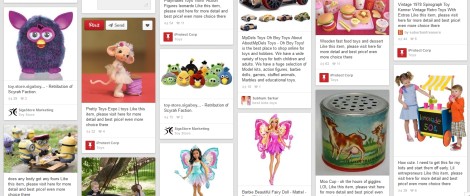
You can find toys pinned on Pinterest all the time. But, can the child play with that large stand-up playscape and that construction set with tiny construction pieces?
Why some toys may be a challenge for neurodivergent and disabled children
- For the child requiring fine motor support, picking up some toys may be difficult.
- If the child isn’t walking, standing at a child-size kitchen or backyard house may not be possible.
- For the child who still mouths everything, certain toys are choking hazards.
Toy suggestions for neurodivergent and disabled
This post could go on for days because of the selection of toys we find on the market today. While Barbie playsets may not be appropriate for your child, today we are lucky enough to find a plethora of toys that are. This list is not exhaustive. Further, I’m not being paid by any of the toys companies. These are toys we own and use and love.
General tips for neurodivergent and disabled children
- Don’t pay too much attention to the age suggestions on the box unless they’re recommended for older kids. If the child plays best with toys at the 18-month level at seven years of age, then so be it.
- Purchase toys that have multiple functions. Think about therapeutic functions as well.
- Make open-ended toys available.
- Avoid toys with too many mechanical functions that do the work for the child.
Mouthing Toys
While you want to eventually move the child away from mouth items, this is how children learn about their world. The mouth is a highly sensitive part of the body, which is why babies tend to mouth their fists and toys. They first explore with their mouths.
While we spend a lot of time taking items away from his mouth, there are times I just let my son enjoy the sensation.
Besides the chewy toys that your therapist may have already recommended to you, here is an additional idea.
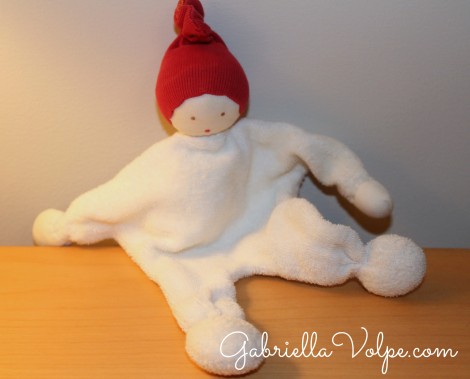
This is an organic teething doll. It washes beautifully. The hat, the feet and hands make for great chewing parts. Since my son can tolerate fabric toys, let him mouth this so that he shakes the need out of his system and doesn’t chew his clothing instead.
Fidget Toys
My son likes to dangle and flap certain toys. It’s also very soothing to him. He does this for short time for self-regulatory purposes.

These large wooden beads are attached by a safe and sturdy elastic. It’s great for fidgeting even for adults.
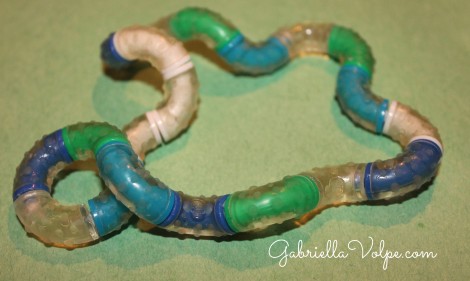
My son has had a variety of these types of toys over the years. This one tangles and twirls and is also great for children in the classroom.
Puzzles
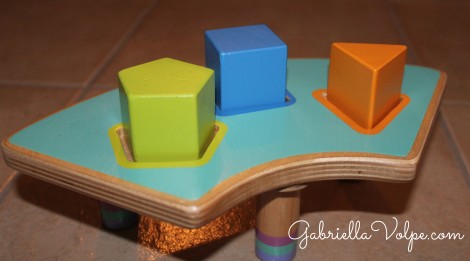
This is a great place to start with puzzles. Use large blocks in a very shallow indentation of the shape.
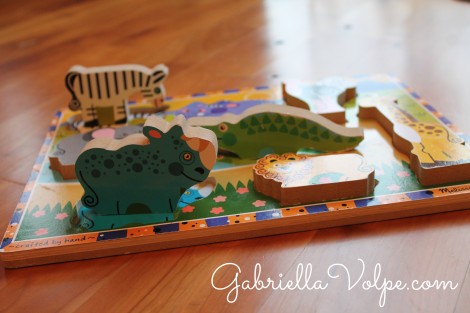
These puzzles have more defined shapes, but still require the full-hand to place them in the shallow indentations. I like these wooden puzzles pieces because they can be used as stand-alone toys for other skill practices like stories, songs, animal sounds, etc.
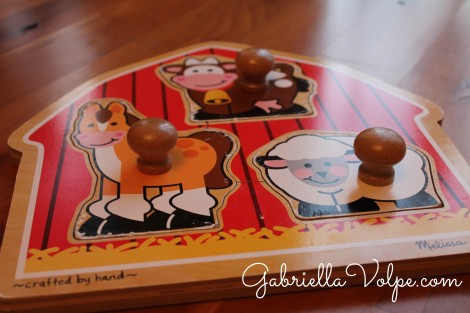
Large-knobbed puzzles are super for grasping skills. I have my little guy pick up two pieces and tap them together like cymbals, and eventually practice placing in the space.
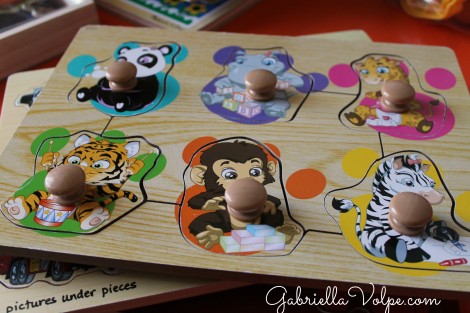
These knobs are slightly smaller than the puzzle above and require a child to have a finer grasp. The next step would be the pin-sized knobs (not pictured, but we own those too).
Blocks
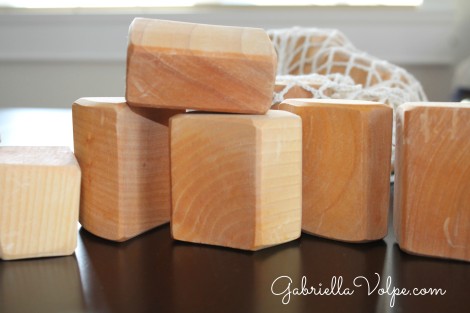
I love these natural cedarwood blocks because they’re irregular shapes. They are open-ended and we’ve used them to create bridges in storytelling as well as towers, etc. Wooden toys offer wonderful sensory experiences.
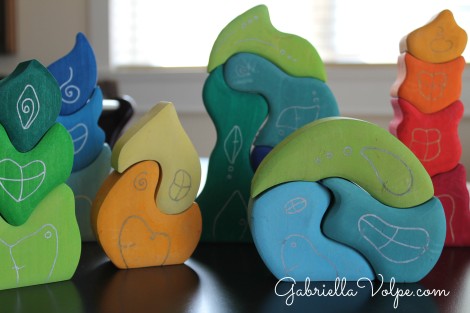
These blocks are also wooden and irregular, but they are colorful and sold as individual sets that can be gnome homes or anything else the imagination would like when mixed together.
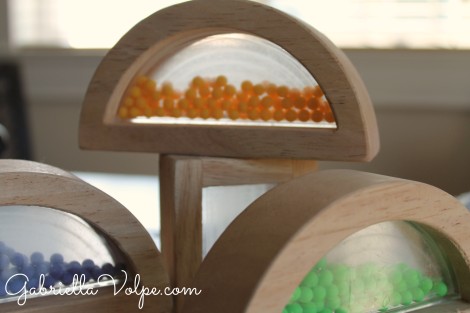
These are wooden blocks with clear windows and colorful beads on the inside. They are lovely to touch and make a light sound when shaken.
Stacking Toys & Sorters
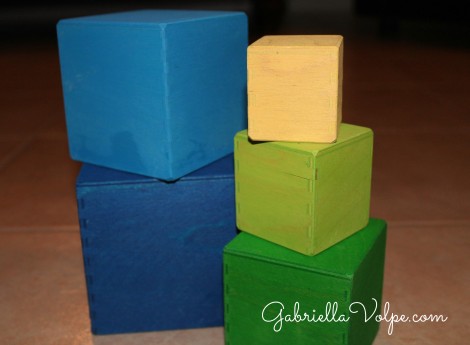
These are wooden stacking toys that can be stacked from above as well as inserted into one another. I like these because they’re cubes.
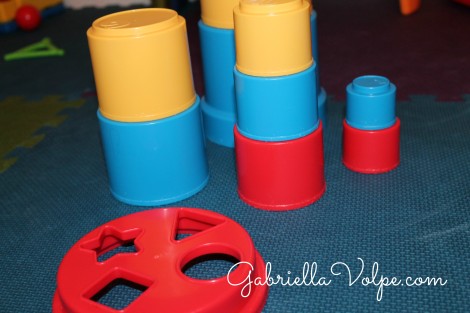
Stacking cups and sorter. Even if the child can’t do these tasks, you can model and talk about the shapes, etc.
Potato Heads
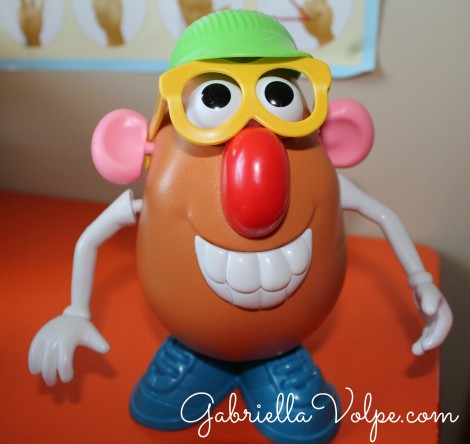
Everyone needs this collection. Be sure the smallest parts are used under supervision. Lots of talk about body parts and articles of clothing can be done with these.
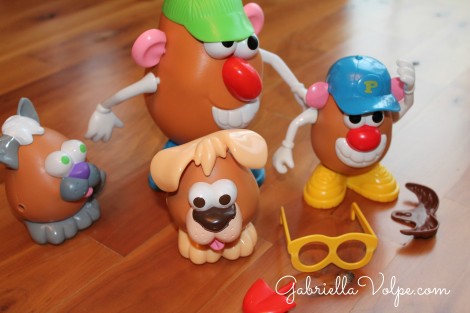
Potato Heads also have pets.
Beading Toys
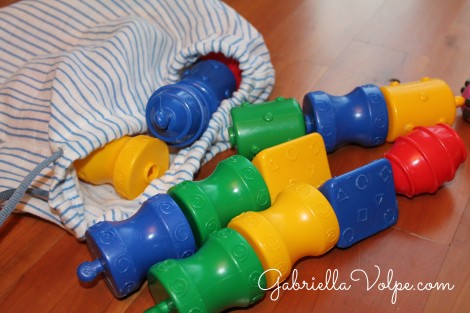
These are large beading toys that click together and pop apart. Different textures and shapes for plenty of fine motor practice.
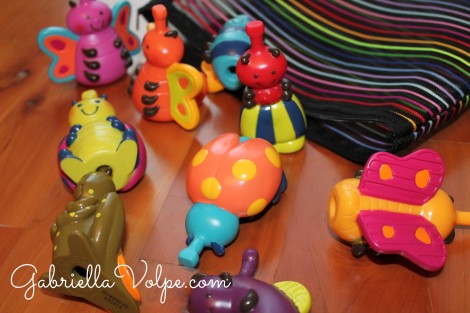
Snapping beading toys in bug shapes.
Construction Toys
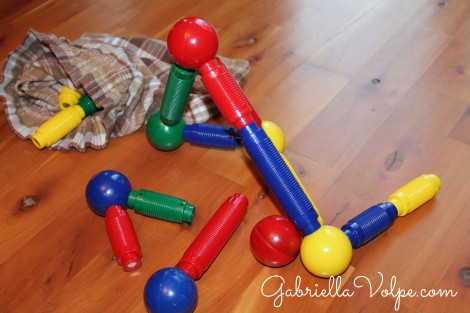
These are so perfect to start with construction toys as they’re magnetic and require very little muscle strength to build.
Puppets and Dolls
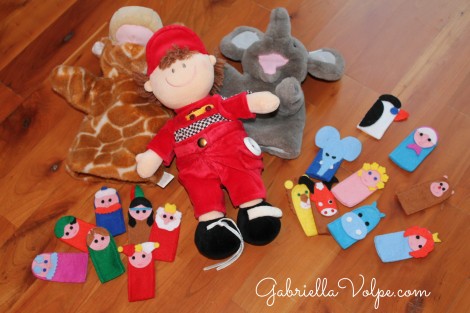
A variety of hand puppets and finger puppets and dolls are great for language activities and storytelling. Must-haves.
Mini-Desk
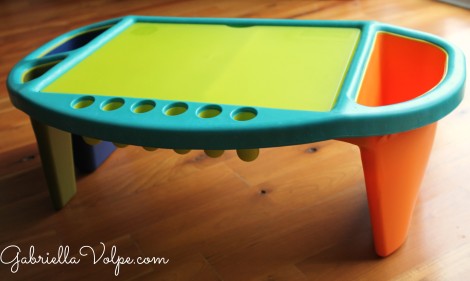
This short desk has some storage and is great for using while seated on the sofa or with a low adapted chair.
Silk Scarves
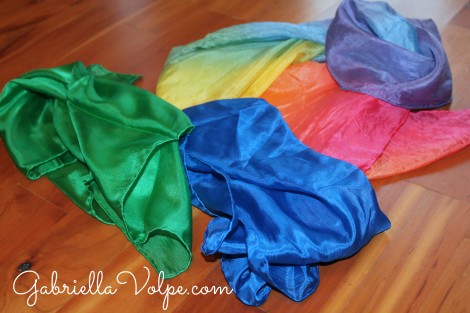
Silk provides a super sensory experience and comes in many colors. Great for movement activities or as props in storytelling.
Do you have some favorite toys to share?
Related Series:

My son has quad CP and he loves:
cars (he sorts them, parks them, and drives them)
Duplo blocks (these are still tricky, but he likes to do Legos like his big brother)
CDS (he LOVES buttons and plays with his radio often)
Monopoly JR (moving a figure around the board is challenging, but good practice for hand/eye coordination)
That’s so great, Catherine. Does your son have a child-friendly CD player you can recommend, or is it just any CD player?
I wanted to mention both the cars and Duplo-style blocks in this post, but needed to draw the line somewhere. I’m glad you mentioned those. We have this really neat car that has a handle on the top for easier grasping and rolling for those just getting started with car-play.
Thanks for sharing.
Great article once again!
One toy that I find great are wooden train tracks. It’s an open ended toy and it can help the child understand the notion of concave and convex, which is quite useful for more complex puzzles down the road. And just having the child guide the train through a path he or his parents have made gives for varied hand movement.
How interesting that I’ve never thought about train tracks in that way. They are indeed advanced puzzles. Perhaps this is why my little one doesn’t really show an interesting in having trains race around a track, even though he is attracted to trains and their sounds.